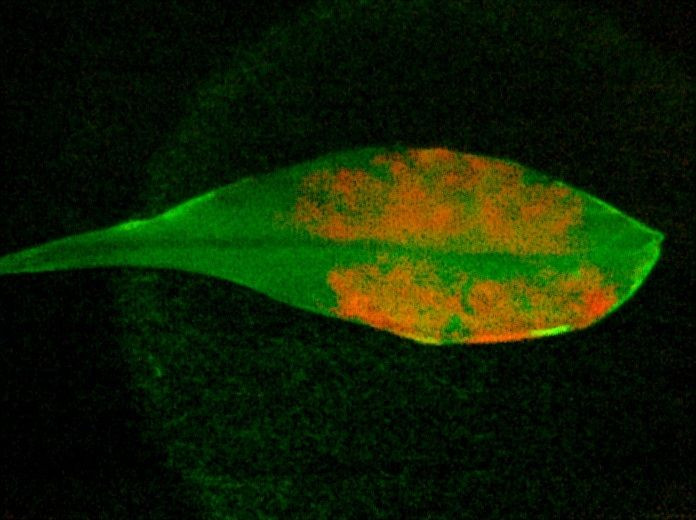‘Plant Nanobionics’ Shows Promise After Leaves Infused With Carbon Nanotubes Saw 30% Boost In Energy Production

The term “bionic plants” might conjure an image of a tree with metal hardware for branches, but the mechanics of it are actually far less science fiction-y. Researchers from the Massachusetts Institute of Technology have found a way to infuse plants with carbon nanotubes in order to boost their energy output.
Carbon nanotubes are nano-sized cylinders of carbon atoms that are often found in carbon fiber products like baseball bats and golf clubs. After inserting carbon nanotubes coated in single-stranded DNA into the plants’ chloroplast, the centers of photosynthesis, researchers see a 30 percent increase in the plants’ ability to capture and convert light energy, they report. Chlorophyll, the pigment found in chloroplast that absorbs incoming sunlight, normally takes in just a small fraction of the light in the 400- to 500-nanometer and 600- to 700-nanometer range. The carbon nanotubes widened this range to allow the plants to absorb more light.
According to the MIT study, published in the journal Nature Materials, the process works by spurring the pigments in the plants to transfer electrons between multiple photosystems more efficiently.
“This is a marvelous demonstration of how nanotechnology can be coupled with synthetic biology to modify and enhance the function of living organisms -- in this case, plants,” James Collins, a professor of biomedical engineering at Boston University who was not involved in the research, said in a statement. “The authors nicely show that self-assembling nanoparticles can be used to enhance the photosynthetic capacity of plants, as well as serve as plant-based biosensors and stress reducers.”
Researchers from MIT utilized Arabidopsis thaliana, a type of cress that’s often used in plant research, for their experiment. To see how the nanotubes affect photosynthesis, the team used a dye that changes color when electrons are absorbed. Photosynthesis produces these charged particles. The more photosynthesis that took place, the more dramatic the color of the dye became.
“Plants are very attractive as a technology platform,” Michael Strano, a professor of Chemical Engineering and lead author of the study, said in a statement. “They repair themselves, they’re environmentally stable outside, they survive in harsh environments, and they provide their own power source and water distribution.”
Scientists say improving a plant’s energy output has a variety of applications. Nanobionics could lead to self-powered pollution monitors and detectors for chemical weapons.
"Right now, almost no one is working in this emerging field," Juan Pablo Giraldo, a plant biologist and study author, said in a statement. "It's an opportunity for people from plant biology and the chemical engineering nanotechnology community to work together in an area that has a large potential."
© Copyright IBTimes 2024. All rights reserved.





















